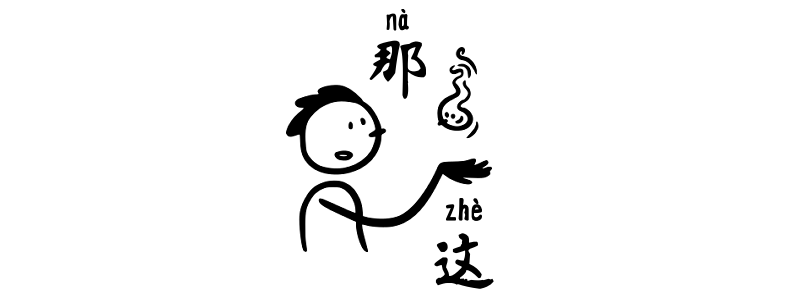Grammar Point:
The terms “here” and “there” in Chinese can be translated as follows:
- This: 这个 zhège or 这 zhè
- That: 那个 nàge or 那 nà
Structure
這/这 or 那 + Measure Word + N
In colloquial and informal contexts, it is possible to drop the measure word.
這個蛋糕真好吃这个蛋糕真好吃
This cake is delicious.
那位老師很討厭那位老师很讨厌
That teacher is annoying.
這是我的嗎?这是我的吗?
Is this mine?
那人好漂亮!那人好漂亮!
That person is so beautiful!
這道菜好辣这道菜好辣
This dish is spicy.
我要那個,謝謝我要那个,谢谢
I’ll take that one, thank you.
這書有夠貴这书有够贵
This book is really expensive.
FYI
If you want to sound like a true Chinese native speaker, 有够 yǒu gòu is the word you’ve been looking for. It’s like a secret code that instantly boosts your coolness level and adds that native touch to your Chinese conversations. In colloquial Chinese, you can always use the term 有够 yǒu gòu followed by an adjective to express a super strong or exaggerated degree of something. For example, let’s say you taste some mouth-watering dumplings. You could exclaim, 这个饺子有够好吃! zhège jiǎozi yǒugòu hǎochī!, which means “These dumplings are ridiculously delicious!”
Common Mistakes
Two character 那 nà and 哪 nǎ are indeed similar, but they have different meanings. 那 nà is used to indicate “that” and 哪 nǎ is “which” in English.
哪個多少錢?哪个多少钱? ❌
How much is that?
那個多少錢?那个多少钱? ✅
How much is that?
哪個便宜?哪个便宜? ✅
Which one is cheaper?
Practice
TouchHover over the space to see the answers.
✔️ That is my big house.
那個是我的大房子那个是我的大房子
✔️ That lady is my beautiful wife.
那位是我美麗的太太那位是我美丽的妻子
✔️ These are all my dreams.
這都是我的夢这都是我的夢


